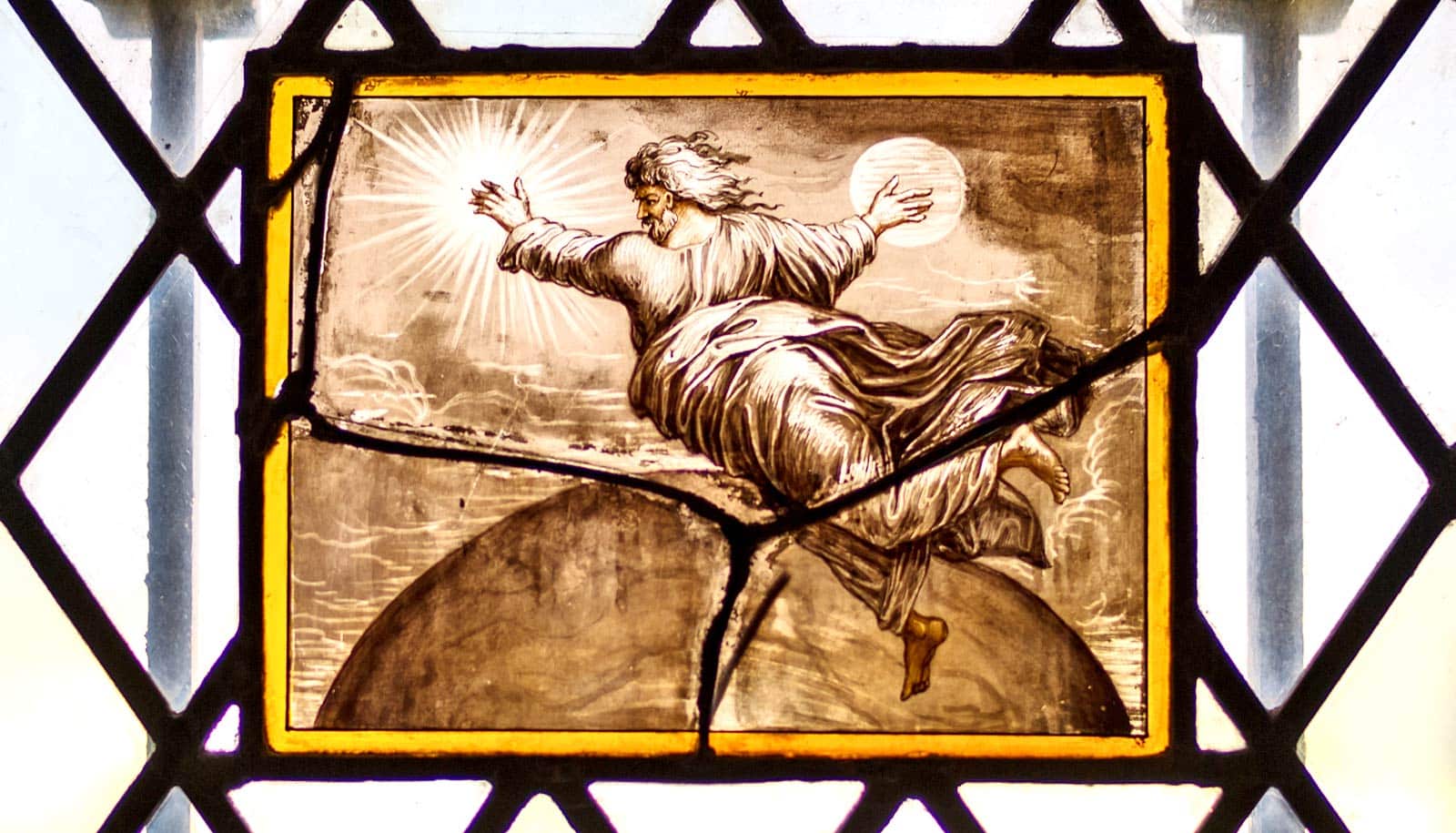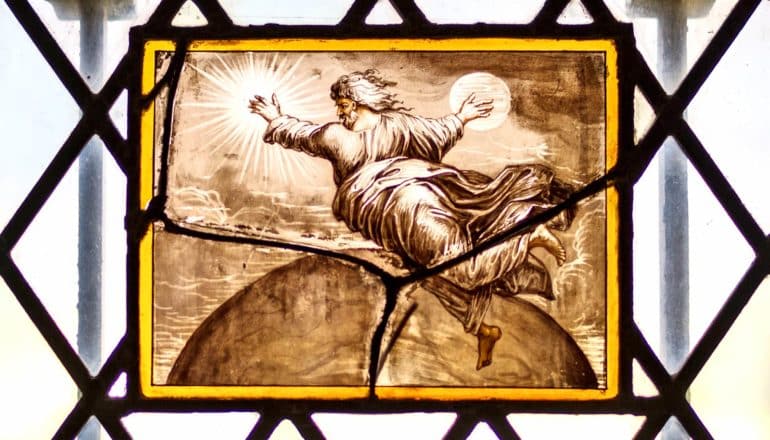
(Credit: Tom Coates/Flickr )
Seeing God as a white man shapes views of leadership
"Basically, if you believe that a white man rules the heavens, you are more likely to believe that white men should rule on Earth."

The characteristics that US Christians assign to God—e.g., male, female, black, white, old, young—are the same identities they attribute to a boss, research finds.
The researchers, led by Stanford psychologist Steven O. Roberts, conducted a series of studies with US Christians and found that when people conceptualize God as a white man, they are more likely to perceive white male job candidates as more fit for leadership than black and female applicants.
Their data, which appear in the Journal of Personality and Social Psychology, reveal the consequences of intuiting a particular identity to God and how those beliefs manifest in everyday life.
“Basically, if you believe that a white man rules the heavens, you are more likely to believe that white men should rule on Earth,” says Roberts, an assistant professor of psychology in the Stanford School of Humanities and Sciences.
What does God look like?
Roberts and his team conducted seven different studies, including two experiments with atheists and agnostics, that tested perceptions about God and leadership.
“Beliefs about who rules in heaven predict beliefs about who rules on Earth.”
“People are constantly exposed to the image of God as a white man,” Roberts says.
As part of their first study, the researchers analyzed images resulting from a Google search engine query for the word “God.” They found that of the images that depict God in a human form, 72% were of a white man (6% were images of actor Morgan Freeman, who portrayed God in the 2003 film Bruce Almighty).
Given the pervasive depiction of God as a white man, Roberts wanted to see whether people believed that to be true. The researchers recruited 444 US Christians and showed them 12 pairs of faces that differed in age, race, and gender. They were asked which face in the pair looked more God-like.
Overall, the researchers found that participants reported that God was more male than female. They also found that white Christians were more likely to say God was white and black Christians were more likely to say God was black.
“It was somewhat shocking that our participants explicitly attributed a gender and a race to God,” Roberts says.
Who’s the boss?
Roberts wanted to test that finding with beliefs about who should be in leadership.
For their second study, the researchers recruited a new sample of 1,012 US Christians. In addition to completing the same set of questions and exercise administered in the first study, respondents were asked to imagine that they worked for a company that was hiring a new supervisor. They were then shown faces of 32 job applicants and asked to rate how well each applicant would fit the supervisory position.
Roberts found that when Christians conceptualized God as white and male, they rated white male job applicants more favorably than white female candidates, who were rated more favorably than black male and black female candidates. This result was found with white, black, male, and female respondents.
“The conception of a white male God, which we are constantly exposed to, has important consequences for who we think should and should not be in charge,” Roberts says.
Children draw God
Given the prevalence of the image of God as a white male among adults, Roberts was also curious to know how these effects unfolded with US Christian children.
“If kids think of God as a white man, they may grow up thinking that only white men should lead,” Roberts says. “If true, we would want to early on encourage children to see everyone as potential leaders, regardless of their race or gender.”
The researchers recruited 176 children between the ages of 4 and 12 at their Sunday school at eight churches—five in Northern California and three in North Carolina.
Some of these children were asked to draw a picture of God. They received a blank piece of paper and 14 crayons that included a variety of skin tones and colors.
The researchers then showed these images to a sample of 224 adults who identified each image by age, race, and gender (for example, they were asked whether they thought the drawing depicted an old or young person, black or white, male or female). To ensure that people were objective in their ratings, religious imagery was scrubbed out of the drawings so it was unclear they were illustrations of God.
Overall, adults rated the children’s drawings as more male than female and more white than black.
These ratings also corresponded with how children selected leaders. Children saw 12 faces of different people, male and female, black and white, and asked: “There are lots and lots of people at the place where I work. But only three of them are bosses. Which three do you think are the bosses?”
Roberts found that the whiter the child’s picture of God was rated, the more that child rated white people as more boss-like.
“Even early in life, the belief that God is white shapes how children evaluate actual human beings,” Roberts says.
Heaven and Earth
The other four studies reported in the paper extended beyond the context of a Judeo-Christian God. These studies introduced adult Christians and atheists as well as preschoolers who had never heard of God to a made-up deity from a fictitious planet. The researchers found that participants still used a god’s identity to draw conclusions about who is suitable for leadership.
“Collectively, our data provide robust support for a profound conclusion: Beliefs about who rules in heaven predict beliefs about who rules on Earth,” the researchers write in the paper.
Coauthors of the paper are from Stanford, Vanderbilt University, and California Polytechnic State University.
Source: Stanford University
The post Seeing God as a white man shapes views of leadership appeared first on Futurity.
Share this article:
This article uses material from the Futurity article, and is licenced under a CC BY-SA 4.0 International License. Images, videos and audio are available under their respective licenses.
Related Articles:
Natural hair bias cuts job opportunities for Black women
Aug. 19, 2020 • futurityCalling out white people for sexism can cut racism, too
June 25, 2020 • futurityLinks/images:
- https://doi.org/10.1037/pspi0000233
- https://www.futurity.org/bias-women-elections-1045232-2/
- https://www.futurity.org/speech-patterns-wages-bias-2208332/
- https://www.futurity.org/course-evaluations-gender-bias-2064752-2/
- https://news.stanford.edu/2020/01/31/consequences-perceiving-god-white-man/
- https://www.futurity.org/image-of-god-leadership-characteristics-2270922-2/
- https://www.futurity.org


